Julián Cabrera
XLR : a Lightweight Indicator to Measure Video QoE in IP Networks
Feb 08, 2024



Abstract:A novel Key Quality Indicator for video delivery applications, XLR (piXel Loss Rate), is defined, characterized, and evaluated. The proposed indicator is an objective measure that captures the effects of transmission errors in the received video, has a good correlation with subjective Mean Opinion Scores, and provides comparable results with state-of-the-art Full-Reference metrics. Moreover, XLR can be estimated using only a lightweight analysis on the compressed bitstream, thus allowing a No-Reference operational method. Therefore, XLR can be used for measuring the quality of experience without latency at any network location. Thus, it is a relevant tool for network planning, specially in new high-demanding scenarios. The experiments carried out show the outstanding performance of its linear-dimension score and the reliability of the bitstream-based estimation.
A Video-Aware FEC-Based Unequal Loss Protection System for Video Streaming over RTP
Feb 07, 2024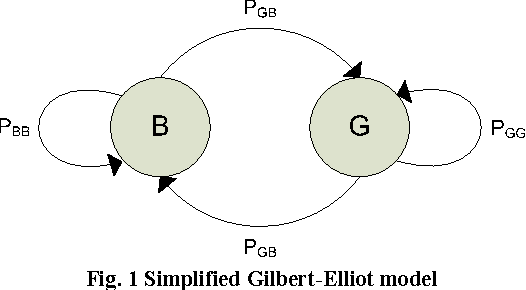
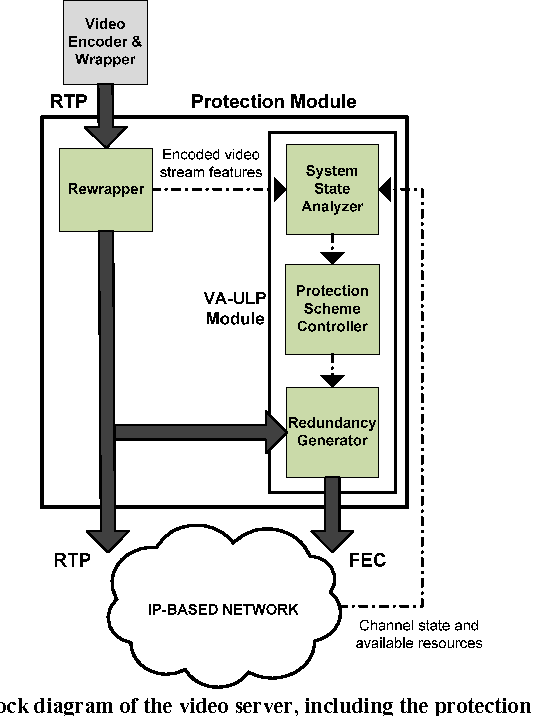
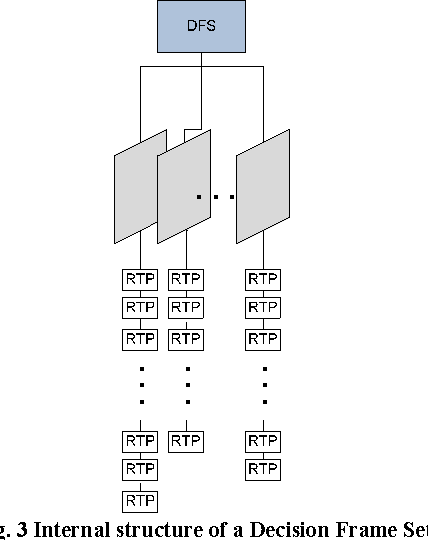
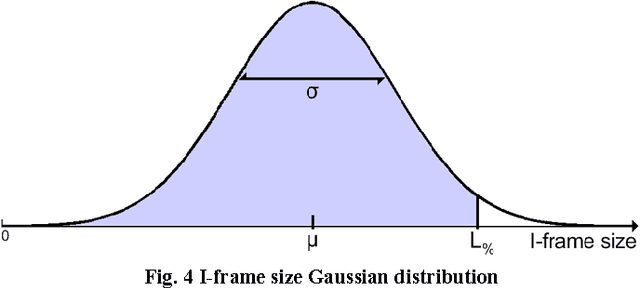
Abstract:A video-aware unequal loss protection (ULP) system for protecting RTP video streaming in bursty packet loss networks is proposed. Considering the relevance of the frame, the state of the channel, and the bitrate constraints of the protection bitstream, our algorithm selects in real time the most suitable frames to be protected through forward error protection (FEC) techniques. It benefits from a wise RTP encapsulation that allows working at a frame level without requiring any further process than that of parsing RTP headers. This makes our system straightforward and fast, perfectly suitable to be included in commercial video streaming servers. Simulation results show how our technique outperforms other proposed ULP schemes.
Application-Layer FEC Scheme Configuration Optimization via Hybrid Simulated Annealing
Feb 07, 2024Abstract:An optimization technique based on an adapted combination of simulated annealing (SA) and tabu search (TS) is presented. This method aims at finding near-optimal unequal error protection (UEP) application-layer FEC code configurations. This approach is intended to smartly protect audio and video transmission over IP networks when hard time restrictions apply. The considered code is a UEP version of the widely-used Pro-MPEG COP3 codes enabling the use of several matrices of dissimilar size and thus of unequal recovery capability. Finding the optimal configuration frequently requires the evaluation of a large solution space. So, to fulfill the imposed constraints, SA is adapted to the specifics of the scenario. In particular, the annealing schedule is conditioned by the real-time restrictions. Furthermore, solution neighborhood structures are determined by a proposed definition of distance between protection configurations, which, jointly with TS, conditions the selection of candidate solutions. Experimental results show a significantly improved performance of the optimization process, which invariably fulfills imposed timing constraints, at the expense of a very low distortion increase, when compared to using exhaustive search. These results allow the use of UEP Pro-MPEG COP3 codes for protecting video and audio transmission, which distinctly outperforms the standard code in a wide range of scenarios.
FVV Live: A real-time free-viewpoint video system with consumer electronics hardware
Jul 01, 2020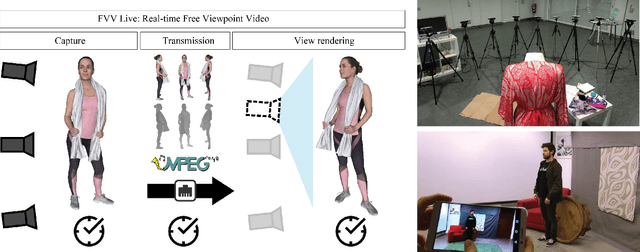



Abstract:FVV Live is a novel end-to-end free-viewpoint video system, designed for low cost and real-time operation, based on off-the-shelf components. The system has been designed to yield high-quality free-viewpoint video using consumer-grade cameras and hardware, which enables low deployment costs and easy installation for immersive event-broadcasting or videoconferencing. The paper describes the architecture of the system, including acquisition and encoding of multiview plus depth data in several capture servers and virtual view synthesis on an edge server. All the blocks of the system have been designed to overcome the limitations imposed by hardware and network, which impact directly on the accuracy of depth data and thus on the quality of virtual view synthesis. The design of FVV Live allows for an arbitrary number of cameras and capture servers, and the results presented in this paper correspond to an implementation with nine stereo-based depth cameras. FVV Live presents low motion-to-photon and end-to-end delays, which enables seamless free-viewpoint navigation and bilateral immersive communications. Moreover, the visual quality of FVV Live has been assessed through subjective assessment with satisfactory results, and additional comparative tests show that it is preferred over state-of-the-art DIBR alternatives.
FVV Live: Real-Time, Low-Cost, Free Viewpoint Video
Jun 30, 2020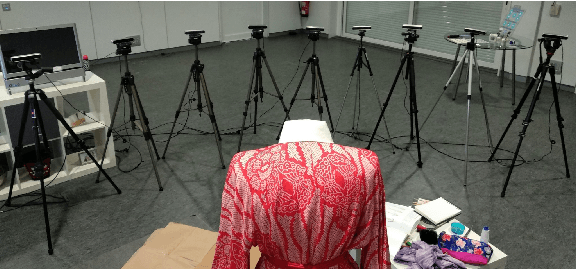

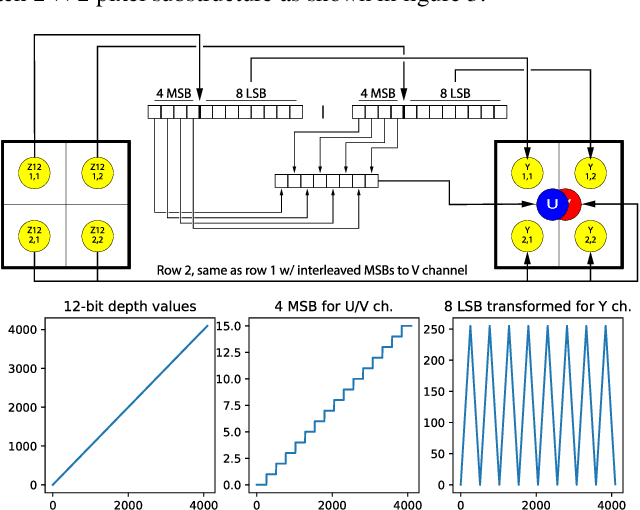

Abstract:FVV Live is a novel real-time, low-latency, end-to-end free viewpoint system including capture, transmission, synthesis on an edge server and visualization and control on a mobile terminal. The system has been specially designed for low-cost and real-time operation, only using off-the-shelf components.
 Add to Chrome
Add to Chrome Add to Firefox
Add to Firefox Add to Edge
Add to Edge